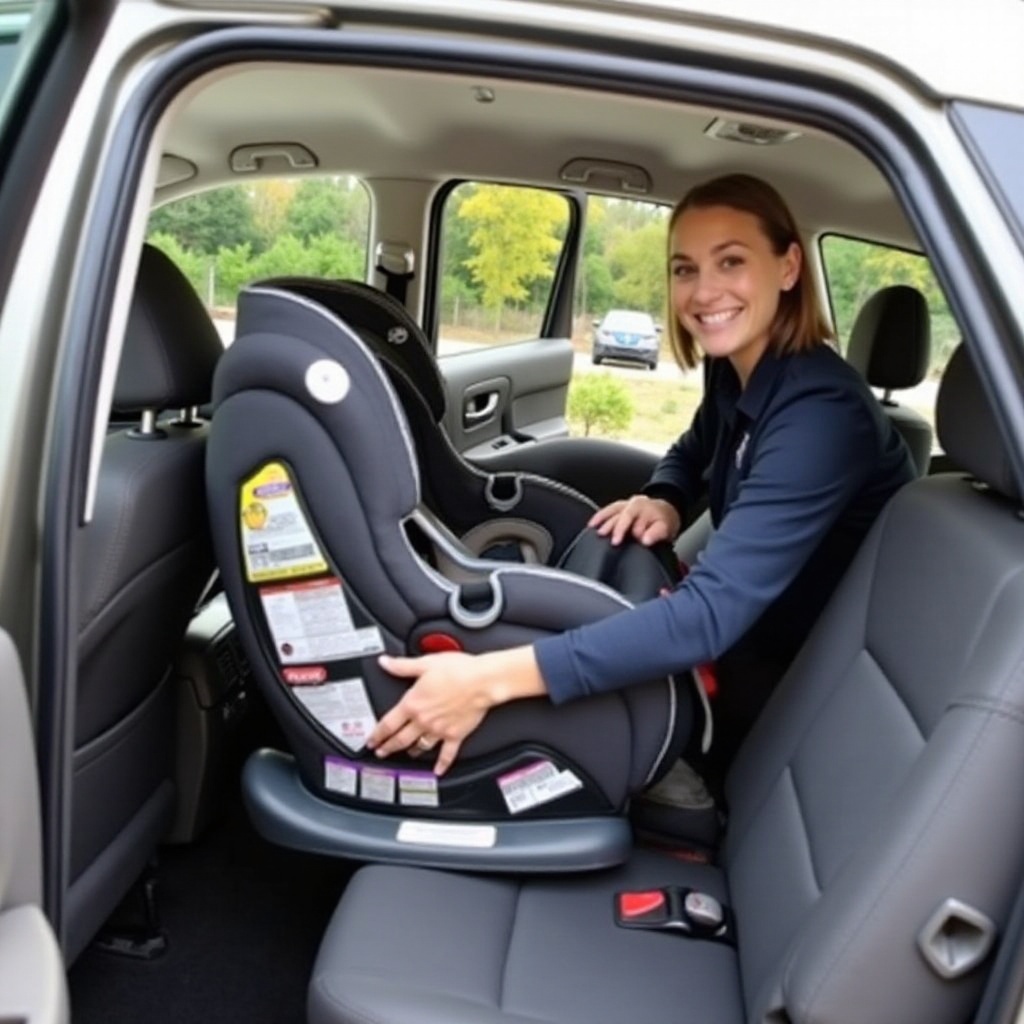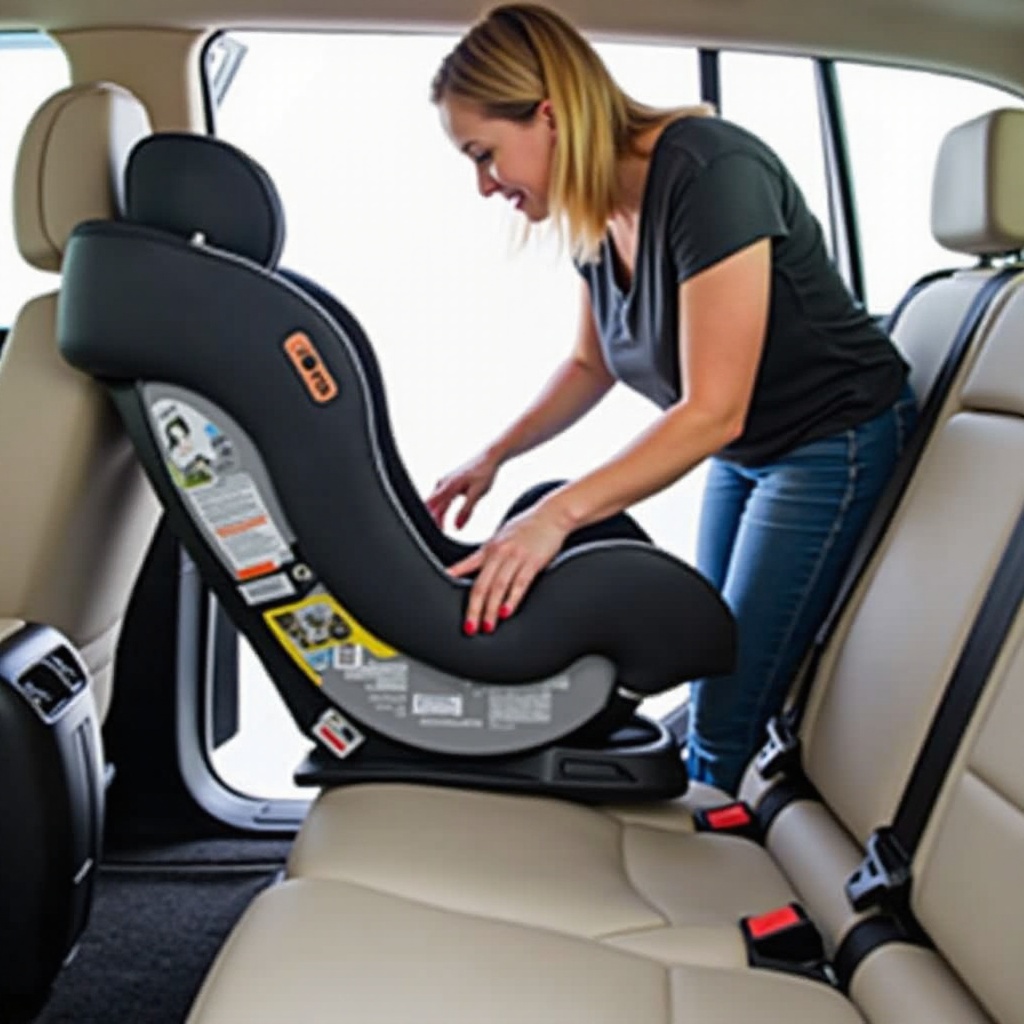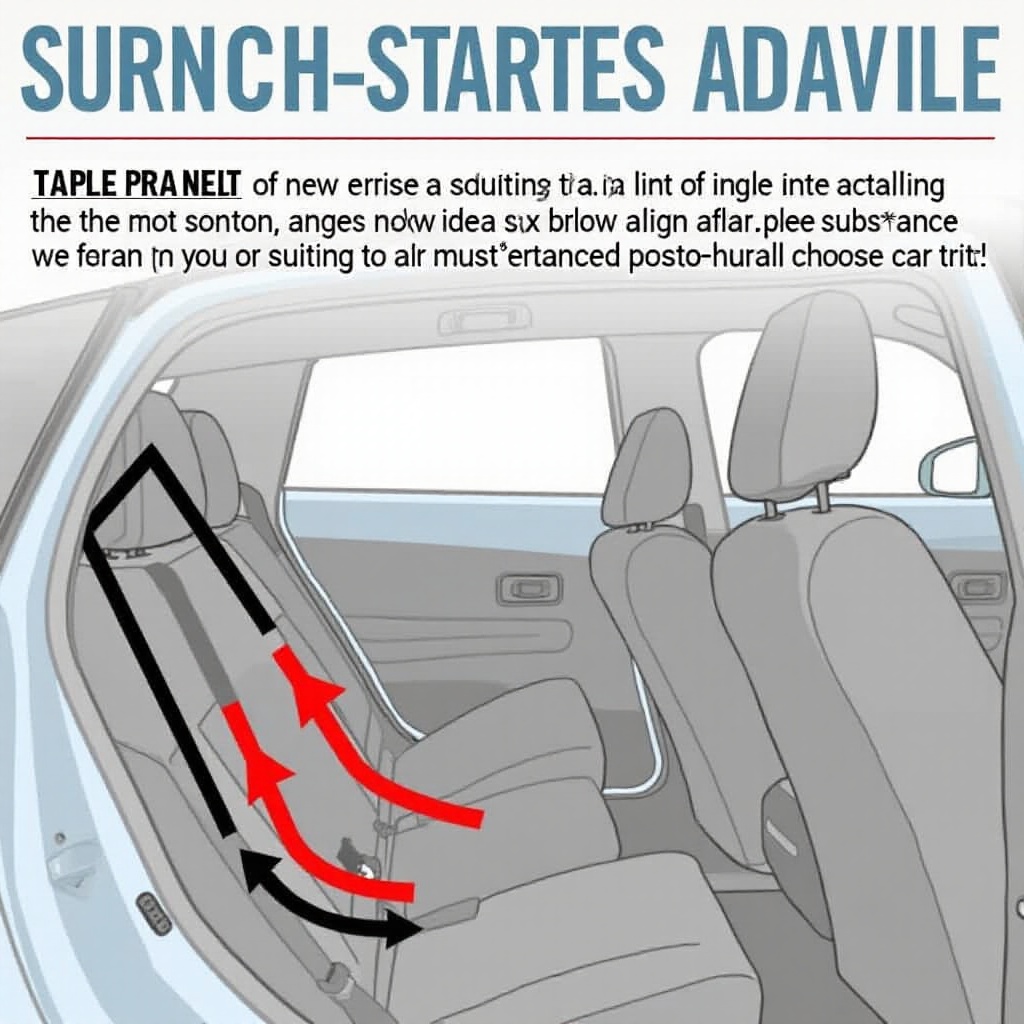Introduction
Installing a car seat in the middle seat of your vehicle can significantly enhance your child’s safety. This guide covers why the middle seat is the safest option, how to prepare for the installation, types of car seats, and step-by-step instructions to ensure a secure fit. By following these guidelines, you can rest assured that your child is protected.

Why Choosing the Middle Seat is Important
The middle seat of your vehicle is arguably the safest spot for your child. This position offers the most protection in the event of a crash due to the distance from the vehicle’s sides. Statistically, children seated in the middle are less likely to sustain injuries in a side-impact collision.
Beyond crash test data, the middle seat also provides a balanced installation point, allowing for a more secure attachment of the car seat. It’s crucial to prioritize your child’s safety by choosing the best possible place for their car seat.
Preparing for Installation
Before diving into the installation process, you need to lay the groundwork. Proper preparation ensures a smoother and more secure car seat installation.
Reading the Manuals
First, carefully review the car seat manual and your vehicle’s owner’s manual. Each car seat and vehicle might have specific instructions and limitations, making it vital to understand both.
Necessary Tools and Preparations
Next, gather any tools you might need for the installation. Typically, this includes the car seat, manuals, and possibly a rolled towel or pool noodle to help achieve the correct angle. Ensure your hands are free and the vehicle is on a level surface.
Types of Car Seats and Their Installation
Car seats come in various types, each with specific installation requirements. Understanding these can help you choose and install the right seat.
Infant Car Seats
Infant car seats are generally rear-facing and offer excellent support for newborns and small infants. They usually come with a detachable base, securing the seat to the car more efficiently.
Convertible Car Seats
Convertible car seats can be used both rear-facing and forward-facing. They are bulkier but grow with your child, making them a flexible, long-term investment.
Booster Seats
Booster seats are for older children who have outgrown forward-facing seats. They elevate the child, ensuring the car’s seat belt fits properly.
Step-by-Step Installation Guide
Proper installation is crucial for the effectiveness of any car seat. Follow these steps for a secure fit.
Rear-Facing Seats Installation (Middle Seat)
- Position the Base: Place the base in the center of the back seat.
- Secure with LATCH or Seat Belt: Attach the base using the LATCH system or seat belt. Ensure there is no more than 1 inch of movement.
- Adjust the Recline: Ensure the seat is at the correct angle, often with the help of a level indicator.
- Attach the Car Seat: Click the car seat into the base, confirming it locks securely.
Ensuring a Secure Installation for Forward-Facing Seats
After reviewing the steps for rear-facing seats, let’s dive into forward-facing seats to complete the guide.
Forward-Facing Seats Installation (Middle Seat)
- Read the Manual: Always start by reviewing the car seat and vehicle manuals.
- Position the Seat: Place the seat in the middle seat and thread the seat belt or LATCH connectors through the forward-facing belt path.
- Tighten and Lock: Tighten the belt or LATCH until the car seat doesn’t move more than an inch side-to-side or front-to-back.
- Use Tether Straps: Secure the top tether to the designated anchor point in your vehicle.
Using LATCH System
The LATCH (Lower Anchors and Tethers for Children) system consists of built-in straps and hooks on the car seat that connect to anchors in the vehicle. It provides an easier and often more secure way to install car seats.
Using Seat Belts Properly
When installing using the vehicle’s seat belt, ensure the belt is locked by pulling it out completely and allowing it to retract. This switch to the locking mode will prevent the belt from loosening.
Securing and Double-Checking the Installation
Always double-check your work to ensure the utmost safety for your child.
Ensuring Tight Fit
After installing, test for tightness by trying to move the car seat in different directions. There should be minimal movement.
Tether Straps Usage
For forward-facing seats, always use the tether strap. Securely fasten it to the designated anchor point, as it decreases the forward movement during a collision.
Final Safety Checks
Conduct a thorough inspection by ensuring the car seat does not shift more than an inch and making sure all straps are tight and secure.

Common Mistakes to Avoid
Avoid these common pitfalls to ensure maximum safety:
– Not reading the manuals.
– Using both the LATCH system and seat belt simultaneously (unless specified).
– Failing to secure the seat tightly.
– Improper angle of the car seat.

Conclusion
Installing a car seat in the middle seat can be straightforward when following the proper steps. Your child’s safety is paramount, and a well-installed car seat provides the best protection.
Frequently Asked Questions
Can I install a car seat in the middle seat of any car?
Not all vehicles are designed for middle seat car seat installation. Refer to your car’s manual for specific instructions and limitations.
How do I know if my car seat is installed correctly?
A properly installed car seat should not move more than one inch side-to-side or front-to-back at the base.
Is it safer for my child to be in a rear-facing or forward-facing seat in the middle?
Children are safer in rear-facing seats for as long as possible. Follow the car seat manufacturer’s guidelines on weight and height limits for rear-facing positions.
